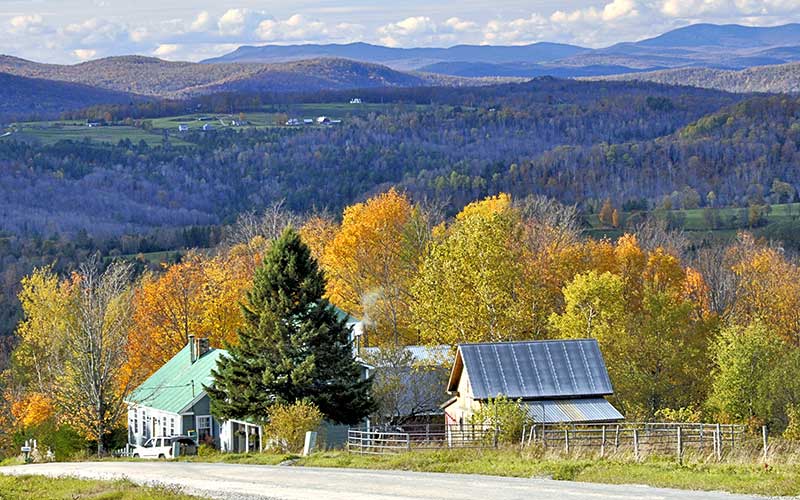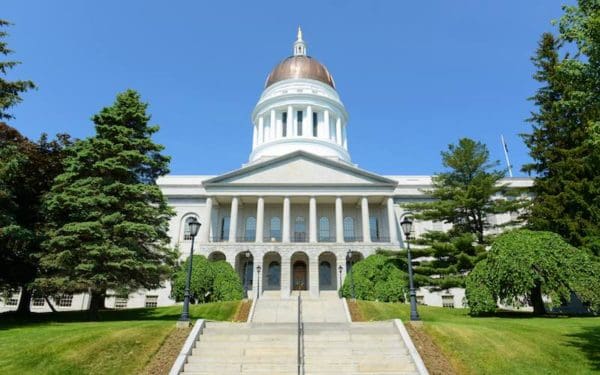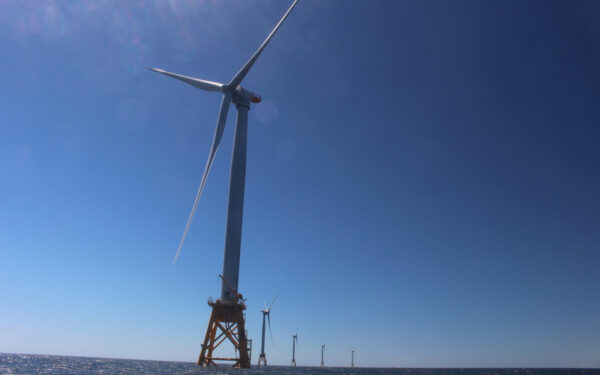
We first published a version of this blog in June of 2021.
Transformational. Game-changing. Equitable. When Vermont unveils its Climate Action Plan in December, let’s make sure those are the words used to describe it – because there’s a lot resting on the outcome.
The climate crisis is already here. The summer of 2021 brought climate impacts closer than ever to our region and the nation. Flooding by Hurricane Ida in southern New England, persistent drought in the north, and poor air quality from wildfires thousands of miles distant show us that extreme weather is our new normal. Our communities, land, and critical resources are at risk. Will the brave little State of Vermont rise to the occasion and turn this crisis into an opportunity to shape a more resilient and equitable future?
In 2020, CLF and partners led the charge for the Global Warming Solutions Act (GWSA). The landmark law commits Vermont to an aggressive roadmap to cut climate-damaging emissions through equitable climate solutions that support a just transition.
As the Vermont Climate Council drafts the state’s Climate Action Plan, its members want to hear from Vermonters like you at upcoming public events offered both in-person and online. This is a chance for you to raise your voice and share your dreams and aspirations for a healthy, thriving, Vermont.
If successful, the plan will create new ways of relating to each other and the land; new methods for growing food and harnessing the outputs of natural ecosystems; and new models for energy generation, transportation, and designing vibrant cities and towns. That’s all easier said than done, but we know Vermonters are up to the challenge.
Our Priorities for Making the Climate Action Plan the Best It Can Be
1. Prohibit new fossil fuel infrastructure and plan to phase out natural gas.
What We Want: It’s time to end our reliance on dirty natural gas. This volatile, dangerous, and polluting fossil fuel has no place in our communities, and we must begin to phase it out completely. The Climate Action Plan must outline the steps Vermont will take to transition away from dirty gas, ban new fossil fuel infrastructure altogether, and reach 100% clean energy.
Why It Matters: To reach the emissions goals laid out in the GWSA, polluting fossil fuels need to be left in the past as we commit to 100% clean energy. As we recover from the COVID-19 pandemic, clean energy can help bolster economic recovery, put people back to work, and lower energy bills regionwide, all while helping us meet emissions reduction targets and ditch fossil fuels.
2. Dramatically reduce emissions from the transportation sector.
What We Want: Vermont must accelerate the electrification of our cars, trucks, and buses. Public transit must be more convenient and comfortable, making it a good alternative to driving alone. We need better information about bus arrivals and how they can get us where we need to go, nicer places to wait, and more frequent service.
Why It Matters: Transportation is the biggest source of climate-damaging emissions in Vermont, and electrification is a big part of addressing that problem. We must ensure that all Vermonters, including those who can’t drive themselves, can get where they need to go.
3. Invest in healthy, climate-smart homes for all Vermonters.
What We Want: Vermont must significantly increase the number of low- and moderate-income homes that are weatherized each year. We must also transition to technologies that use cleaner electricity to power and heat our homes.
Why It Matters: Weatherization reduces carbon pollution and helps the most vulnerable Vermonters lower their energy costs and create a healthy home. It also supports jobs and grows our economy. And, when we power energy efficient technology with clean energy, we save even more.
4. Support the transition to regenerative agricultural systems.
What We Want: Our farmers will play a vital role in Vermont’s response to the climate crisis. Transitioning to regenerative, whole farm, conservation-focused agricultural systems improves resilience and reduces, sequesters, and stores carbon emissions. Organic and regenerative agriculture is also healthier for farmers, farmworkers, farm neighbors, and consumers.
Why It Matters: Current extractive farming production systems degrade soil and air quality and pollute water. Acting now to create more resilient systems will address agriculture’s role in preventing, rather than worsening, the climate crisis.
5. Harness Vermont’s natural ecosystems.
What We Want: A resilient Vermont depends on highly functioning natural ecosystems. Unfortunately, Vermont’s forests, wetlands, and floodplains cannot perform at their highest potential because of a legacy of development and intensive management. The Climate Action Plan should include strategies to restore wetlands and floodplains, incentivize landowners to allow their forests to grow old and wild, and ensure our state lands maximize carbon storage, clean water, and wildlife habitat.
Why It Matters: Vermont’s natural ecosystems are our greatest assets in the fight to both slow and prepare for climate change. Healthy, wild forests and wetlands store carbon, lessen the impacts of floods and droughts, and remove nutrients and sediment that pollute our waterways.
6. Plan for climate emergencies.
What We Want: Utilities, water and wastewater systems, and all state agencies should be required to take climate change into account when developing and approving new projects so that our infrastructure serves us well and keeps us safe even in the face of a changing climate.
Why It Matters: It’s essential to consider future climate conditions when designing, constructing, and updating buildings and infrastructure. They must be located out of harm’s way and made to withstand climate impacts. When buildings and infrastructure are damaged, the most vulnerable populations, such as children, seniors, those with disabilities, those living in poverty, and communities of color bear the brunt of the harm.
Charting a New Path
The Climate Action Plan is Vermont’s chance to pause, reflect, and experiment with bold solutions that work for everyone. CLF is working hard to ensure that the plan seizes this unique moment in Vermont’s history. But we can’t do it without your help.
Take Action
RSVP today for upcoming public events scheduled for September and early October. This is your chance to weigh in on the Climate Action Plan and support urgent climate action for Vermont.
If you can’t make one of the events, you can also send a comment to the Climate Council or one of its subcommittees anytime using this easy-to-fill-out form.
Here are some tips for your comments:
- Make your comment personal and tell your story. You do not need to be an “expert” to make an impact! Let the Council know why you care and share your hopes and dreams for Vermont’s future. You can attach reports, photos and other materials to your comment to support your story.
- Check out this website to learn more about the Climate Council and the areas of focus for each subcommittee.
- Once you submit your comment, follow this link to make sure that it was received (you can also read the comments of other Vermonters).




